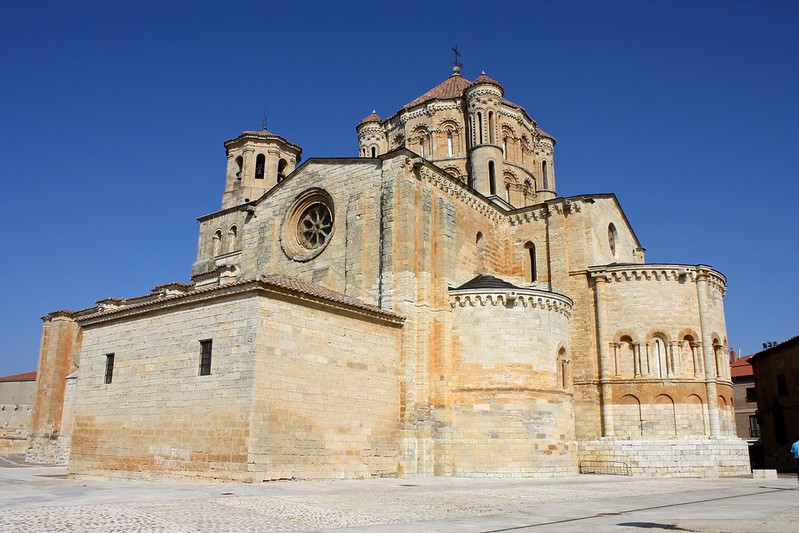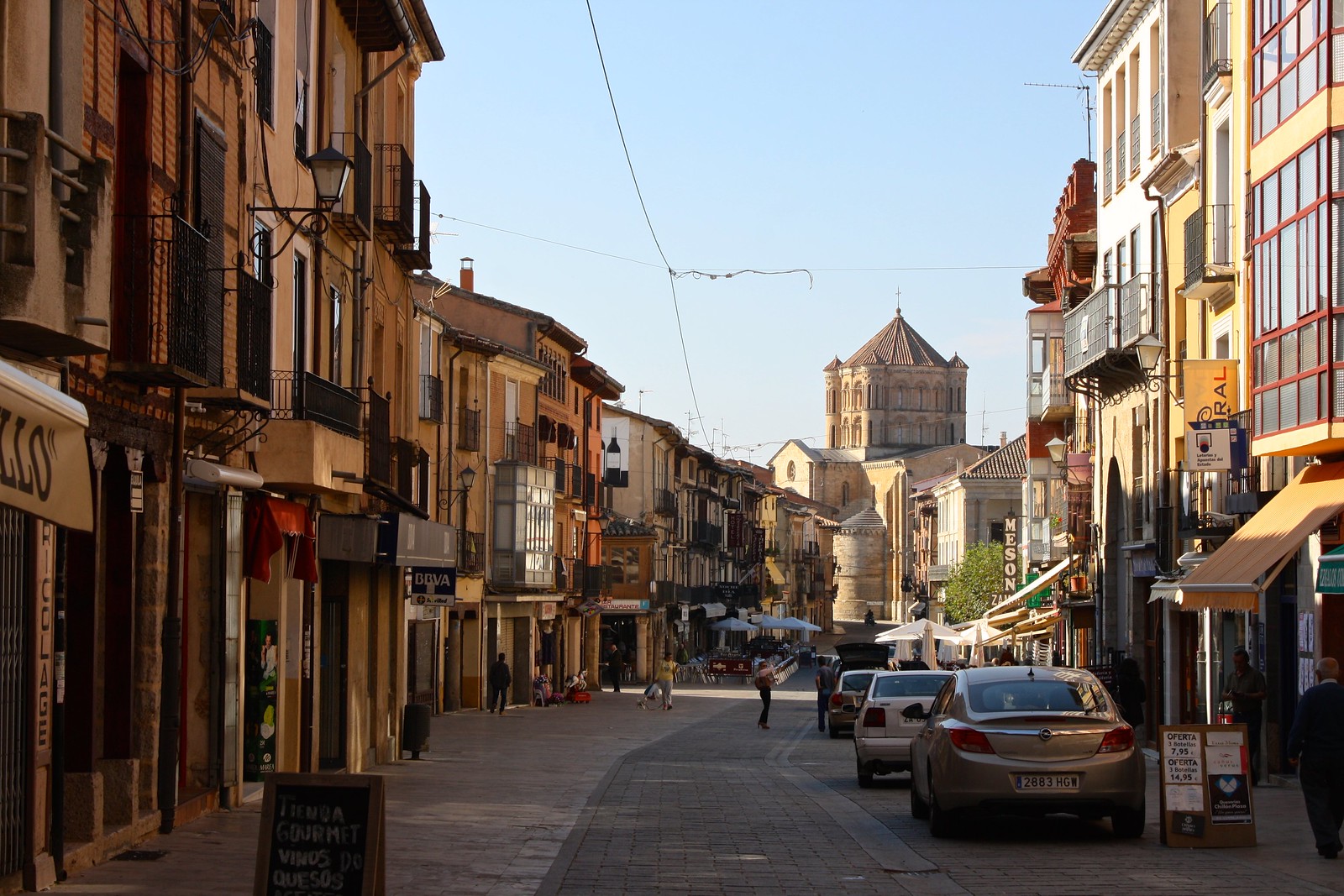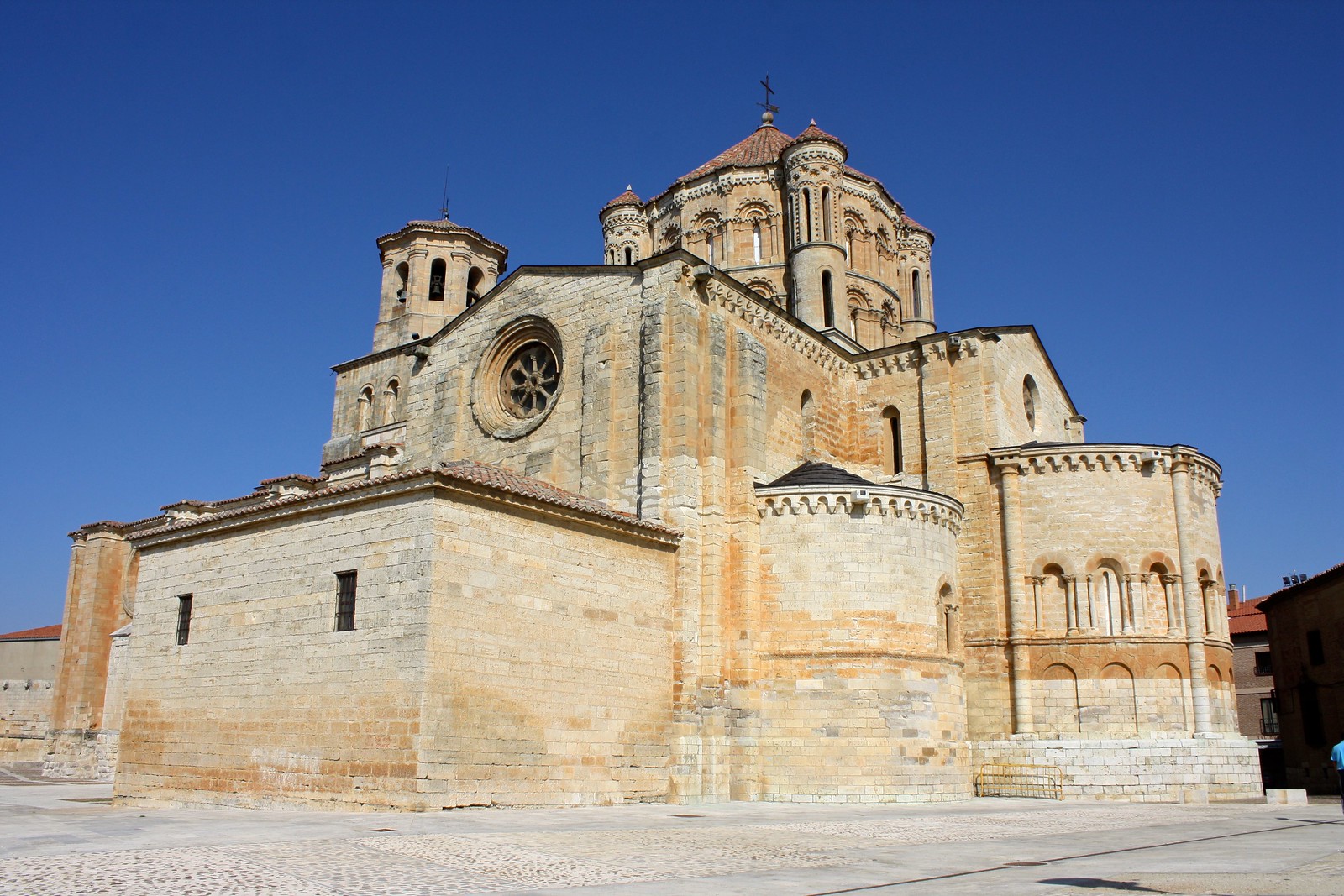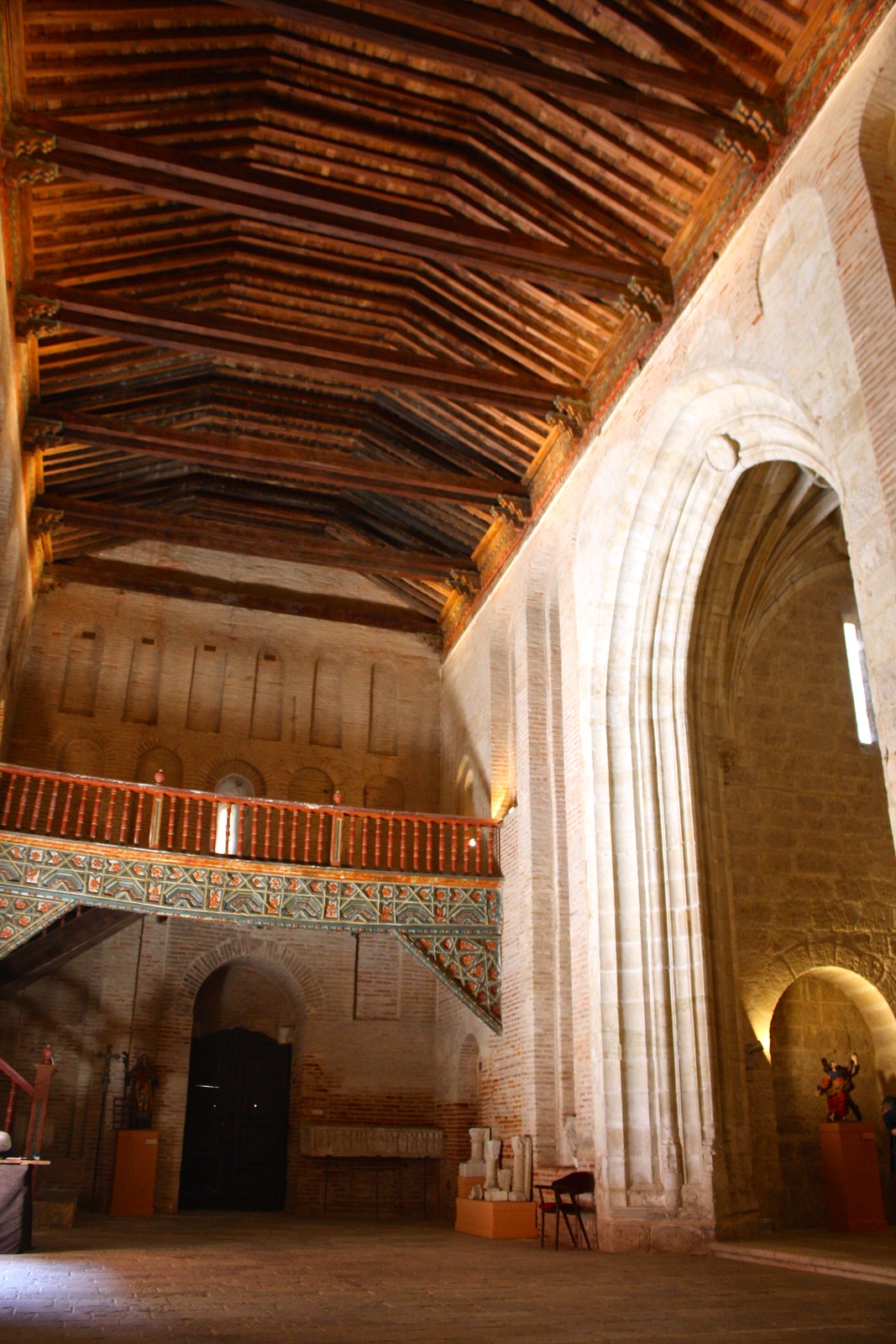Traipsing Through Toro, Spain
On my way back up to Santiago de Compostela this fall after flying into Madrid, I made a pit stop in the gorgeous but anonymous northern city of Zamora for two nights. While in town, I took a daytrip to the nearby village of Toro, home to barely 9,000 souls. Yes, I visited “Bull, Spain”—it doesn’t get more Spanish than that. However, this town turned out to buck tourist stereotypes and had a cultural offering that was much more impressive than its lowly population might suggest.
The area around Toro has actually been one of Spain’s most prestigious wine-producing regions for centuries. It gained an elite reputation in the Middle Ages (bottles of Toro were even stored onboard the Pinta ship when Columbus & co. sailed to the Americas), but for most non-Spaniards it often gets crowded out by Rioja or Ribera del Duero labels.
Fellow Spain blogger Kaley of Y Mucho Más has talked a lot about this quality but affordable variety on her blog a lot; I’ll hand the reins over to her so she can discuss the denominación de origen, recommended wineries, the town’s grape harvest festival, and the town’s wine festival. As she’s married to a local zamorano, she’s had an amazing opportunity to get to know this underrated corner of Spain over the years.
The village itself is small, warm, and inviting, filled with charming parish churches. Although busy in the morning, Toro closes up shop for lunch and siesta before re-emerging in the streets for the afternoon paseo in true small-town fashion.
Apart from being the capital of the wine region of the same name, the village’s main claim to fame is its monumental Colegiata de Toro, the Collegiate Church of St. Mary Major. Visible from Toro’s main drag, Calle Mayor, the church actually reminded me a lot of Zamora’s cathedral—not surprising as the two cities are only about 30km apart, merely a long day’s hike. Both were designed in the Romanesque style around the same time period eight centuries ago; were built in warm, smooth sandstone; were capped off at the eastern end with three semicircular apses; were roofed with sturdy barrel vaults; and feature narrow, “punched-out” windows that let in just enough light.
But the Colegiata is also unique in its own right: the capitals that top its numerous columns are sculpted to look like leaves, vines, and characters from a medieval bestiary; pretty rose windows blossom at all four points of the church’s compass rose; and the impressive Byzantine-style dome rests on a drum with not one but two rows of windows (Zamora’s cathedral has a single drum).
When I came to visit Toro (mainly for the Colegiata and its moody medieval architecture), I was expecting to encounter the somber atmospheres, barrel vaulting, and fascinating column capitals you typically find in a Romanesque church. But I was completely unprepared for the Pórtico de la Majestad, the “Majesty Portico.”
Sculpted and put together near the end of the church’s construction, it’s actually Gothic in style and is a dizzying collection of statues, saints, angels, and biblical scenes that still retain their original, 700-year-old polychrome paint. The faithful float ethereally one on top of each other in the archivolts, and the carvings closer to the floor reminded me a lot of Celtic knotwork. Very impressive.
After checking the Colegiata off my list, I was free to wander around town and see what was hiding behind the next corner. Toro did not disappoint.
There were a handful of Mudéjar-style churches to check out, designed in a combination of the Romanesque or Gothic movements trending in Europe at the time with Islamic decorations and constructions methods. So alongside typical church layouts and pointed arches, you’ll see walls made from brick, intricately carved wooden ceilings, and eight-pointed stars shining from painted plaster.
I enjoyed the simple pleasure of strolling around the village, seeing modern apartment complexes stand side-by-side with crumbling half-timbered homes, hearing friends make (loud) conversation from street level up to a third-floor balcony, or passing a grandma pulling a wheeled fabric carrito, laden with the day’s groceries.
The town was filled with people the morning I was there, and you couldn’t find a spot to sit in the countless terrace bars along Calle Mayor—everyone was catching up over coffee or Toro wine before heading home for dinner.
The town of Toro takes its name from a granite, bull-shaped megalith made by the prehistoric Celtiberian tribes that inhabited the area before the Romans came in. Residents are called not toreros (“bullfighters”) but toresanos.
I attempted to peek inside the Plaza de Toros de Toro (Toro’s bullring) but unfortunately it was closed. Still, I managed to come across a fun little bumper sticker on a white van that used a silhouette of a bull to represent the town’s name.
Ever been to a bullfight in Toro or tasted Toro wine? What other significant but underappreciated Spanish villages do you know of? Tell me below in the comments!

 |
| Calle Mayor |
The area around Toro has actually been one of Spain’s most prestigious wine-producing regions for centuries. It gained an elite reputation in the Middle Ages (bottles of Toro were even stored onboard the Pinta ship when Columbus & co. sailed to the Americas), but for most non-Spaniards it often gets crowded out by Rioja or Ribera del Duero labels.
Fellow Spain blogger Kaley of Y Mucho Más has talked a lot about this quality but affordable variety on her blog a lot; I’ll hand the reins over to her so she can discuss the denominación de origen, recommended wineries, the town’s grape harvest festival, and the town’s wine festival. As she’s married to a local zamorano, she’s had an amazing opportunity to get to know this underrated corner of Spain over the years.
The village itself is small, warm, and inviting, filled with charming parish churches. Although busy in the morning, Toro closes up shop for lunch and siesta before re-emerging in the streets for the afternoon paseo in true small-town fashion.
Collegiate Church of Santa María la Mayor
 |
| Exterior |
Apart from being the capital of the wine region of the same name, the village’s main claim to fame is its monumental Colegiata de Toro, the Collegiate Church of St. Mary Major. Visible from Toro’s main drag, Calle Mayor, the church actually reminded me a lot of Zamora’s cathedral—not surprising as the two cities are only about 30km apart, merely a long day’s hike. Both were designed in the Romanesque style around the same time period eight centuries ago; were built in warm, smooth sandstone; were capped off at the eastern end with three semicircular apses; were roofed with sturdy barrel vaults; and feature narrow, “punched-out” windows that let in just enough light.
 |
| Interior |
But the Colegiata is also unique in its own right: the capitals that top its numerous columns are sculpted to look like leaves, vines, and characters from a medieval bestiary; pretty rose windows blossom at all four points of the church’s compass rose; and the impressive Byzantine-style dome rests on a drum with not one but two rows of windows (Zamora’s cathedral has a single drum).
 |
| Pórtico de la Majestad |
When I came to visit Toro (mainly for the Colegiata and its moody medieval architecture), I was expecting to encounter the somber atmospheres, barrel vaulting, and fascinating column capitals you typically find in a Romanesque church. But I was completely unprepared for the Pórtico de la Majestad, the “Majesty Portico.”
Sculpted and put together near the end of the church’s construction, it’s actually Gothic in style and is a dizzying collection of statues, saints, angels, and biblical scenes that still retain their original, 700-year-old polychrome paint. The faithful float ethereally one on top of each other in the archivolts, and the carvings closer to the floor reminded me a lot of Celtic knotwork. Very impressive.
Exploring this lively little village
 |
| Church of San Lorenzo el Real, exterior |
After checking the Colegiata off my list, I was free to wander around town and see what was hiding behind the next corner. Toro did not disappoint.
 |
| Church of San Lorenzo el Real, interior |
There were a handful of Mudéjar-style churches to check out, designed in a combination of the Romanesque or Gothic movements trending in Europe at the time with Islamic decorations and constructions methods. So alongside typical church layouts and pointed arches, you’ll see walls made from brick, intricately carved wooden ceilings, and eight-pointed stars shining from painted plaster.
 |
| Church of El Santo Sepulcro, interior |
I enjoyed the simple pleasure of strolling around the village, seeing modern apartment complexes stand side-by-side with crumbling half-timbered homes, hearing friends make (loud) conversation from street level up to a third-floor balcony, or passing a grandma pulling a wheeled fabric carrito, laden with the day’s groceries.
 |
| New and old houses |
The town was filled with people the morning I was there, and you couldn’t find a spot to sit in the countless terrace bars along Calle Mayor—everyone was catching up over coffee or Toro wine before heading home for dinner.
Yes, this town’s name means “Bull”
 |
| Granite bull megalith on the edge of town |
The town of Toro takes its name from a granite, bull-shaped megalith made by the prehistoric Celtiberian tribes that inhabited the area before the Romans came in. Residents are called not toreros (“bullfighters”) but toresanos.
 |
| City of Toro bumper sticker |
I attempted to peek inside the Plaza de Toros de Toro (Toro’s bullring) but unfortunately it was closed. Still, I managed to come across a fun little bumper sticker on a white van that used a silhouette of a bull to represent the town’s name.
Ever been to a bullfight in Toro or tasted Toro wine? What other significant but underappreciated Spanish villages do you know of? Tell me below in the comments!
